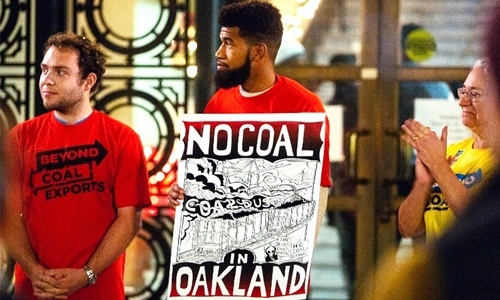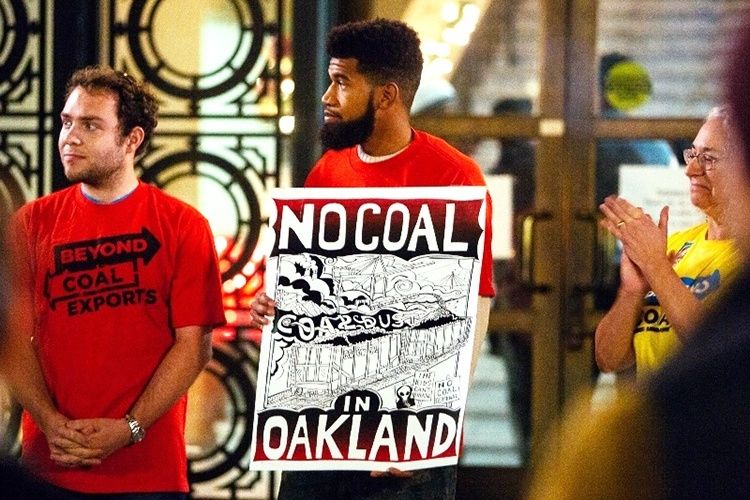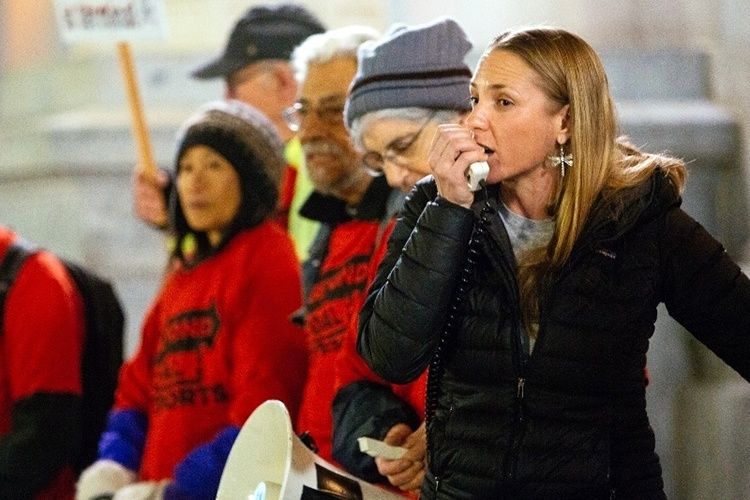


The San Francisco Bay Sierra Club united with SEIU Local 1021, No Coal in Oakland, Fight for 15 and Black Lives Matter for the events. Activists have been working for months to convince the Oakland City Council to block the proposed coal export terminal slated for a former Army base in Oakland. The Oakland City Council had committed to voting on this issue by Dec. 8, but then delayed their vote to February.
Activists gathered at city hall on Tuesday, Dec. 8, to make their voices heard and gather for a community teach-in that brought together a broad intersection of Oakland activists.
“If Oakland Bulk and Oversized Terminal is allowed to store coal on City of Oakland-owned land, it will greatly impact the lives and lungs of people in the Oakland flatlands, who are the most vulnerable members of our community,” said Margaret Gordon, co-founder of West Oakland Environmental Indicators Project. “The developer never proposed coal as a commodity until after agreements were signed with the city. Even now, the developer doesn’t have the funding together to make this terminal a reality without the cooperation of state and local government. The City of Oakland should take the strongest possible stance in opposing the storage of coal at the Oakland Bulk and Oversized Terminal.”
CCIG, the developer of the proposed export facility, promised not to include coal as a commodity handled by the terminal, but is now soliciting a partnership with four Utah counties that could allow the terminal to export up to 10 million tons of coal from their mines each year. A Utah funding body approved $53 million to buy space at Oakland Bulk Terminal for these exports. This deal is being conducted behind the backs of the Oakland City Council and the Port, both of which oppose coal as a commodity for shipping in Oakland. While the Mayor, members of the council and residents have demanded a stop to this backroom deal, the developer has yet to abandon the plans.
Those opposing the plan to export coal through Oakland have voiced concerns over how this decision will affect the community’s safety, the environment and public health.
“Low-income communities of color disproportionately overburdened by pollution are on the front lines of potential train derailment in West and East Oakland,” said Ernesto Arevalo, East Oakland environmental justice and housing advocate. “The transportation of coal is another burden to these communities that are already facing other environmental risks and displacement.”
This deal will also undermine California’s strong commitment to cutting carbon pollution, as the state continues to suffer from extreme drought, forest fires and other signs of climate disruption.

 233k
233k  41k
41k  Subscribe
Subscribe 

